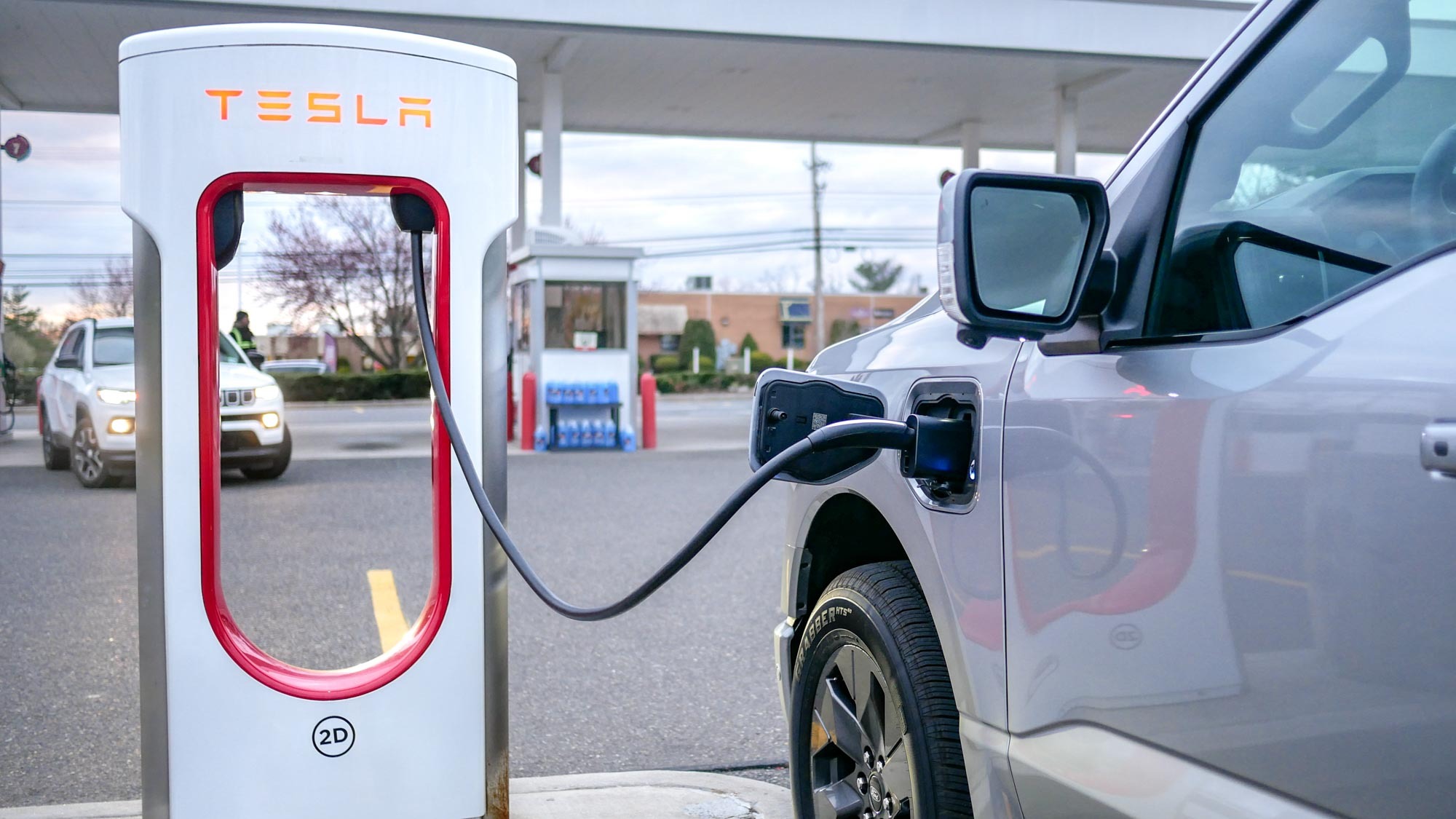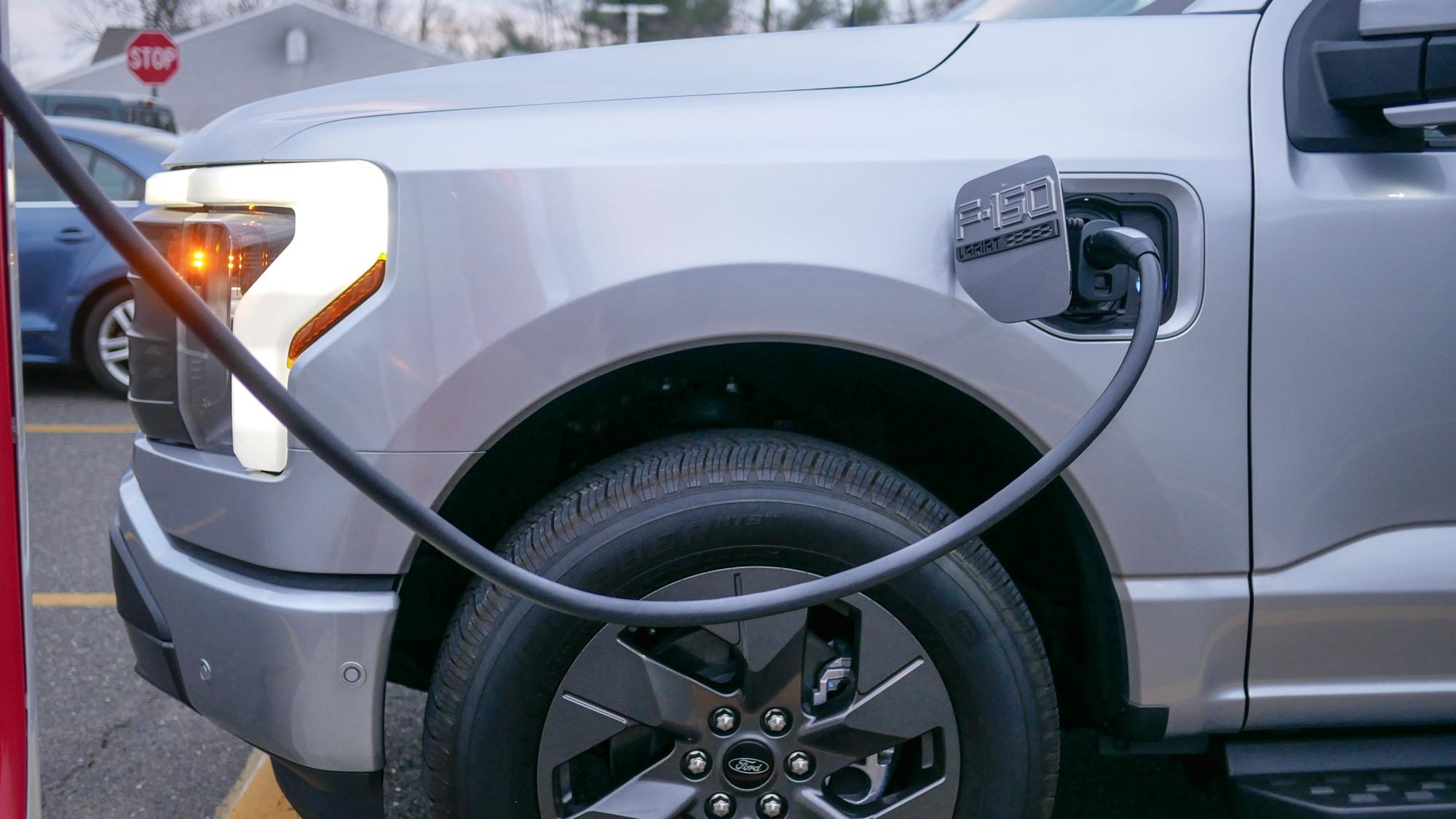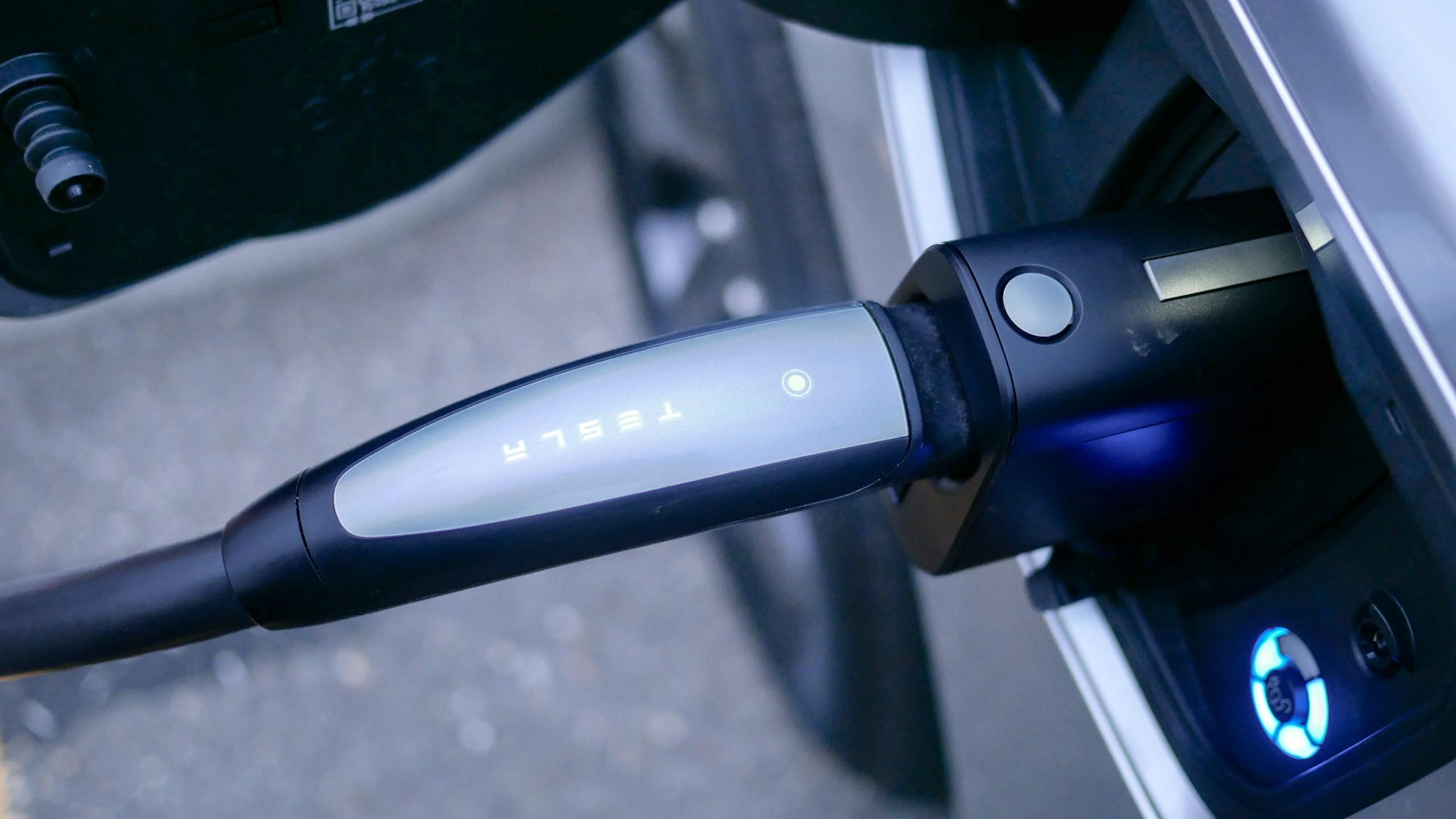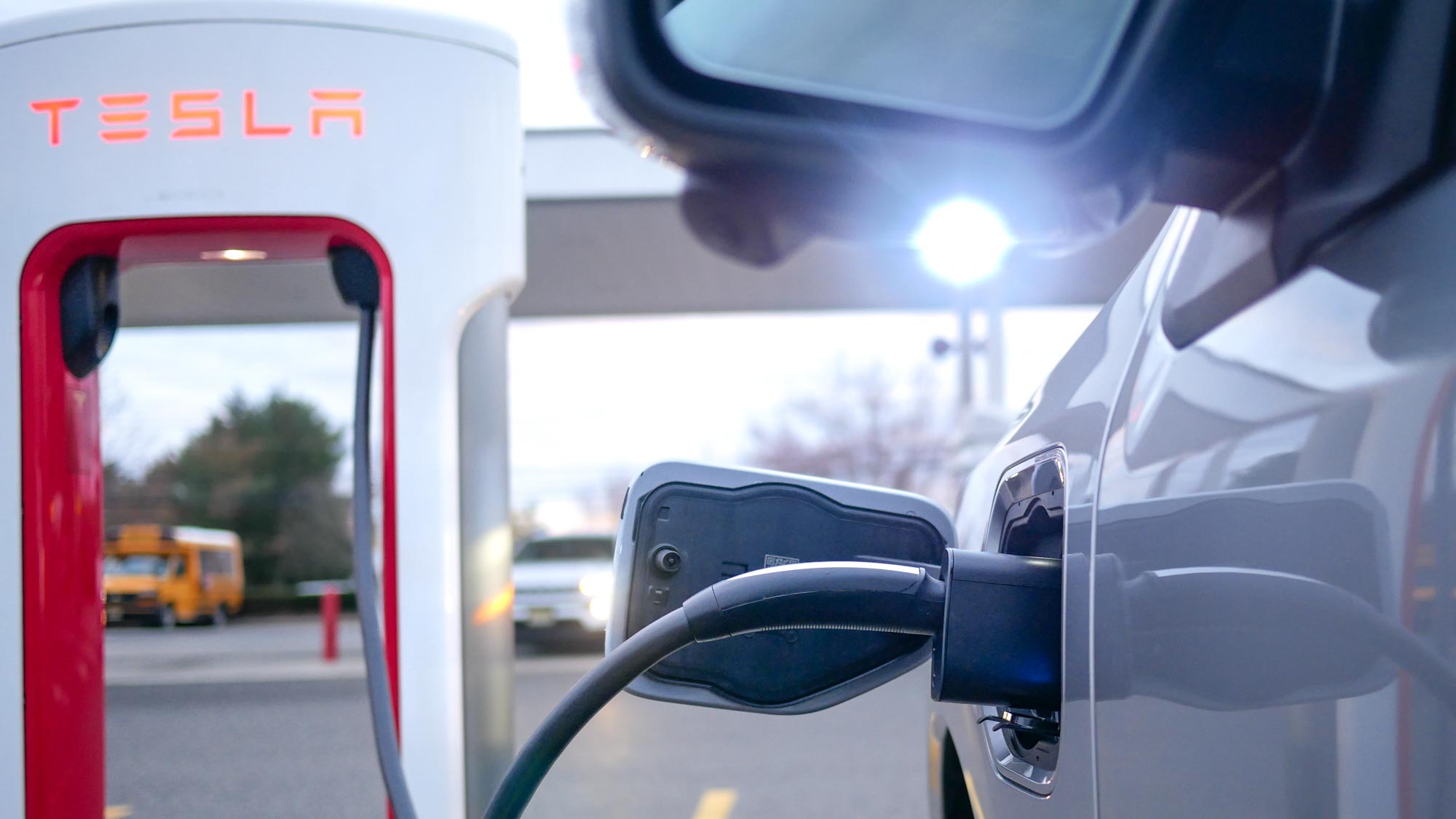
Ford F150 Lightning and Mustang Mach-E owners have a lot to be excited about now that the company is providing complimentary adapters that will let them charge their EVs at Tesla Supercharger locations. That’s because Ford’s providing eligible customers with a free adapter that allows for them to do this, opening up even more locations nationwide where they can juice up their vehicles.
If you’re not familiar with the various EV charging standards, think of it much like Apple’s Lightning port in its older iPhones versus USB-C used in many Android phones. The physical charging ports in Ford EVs differ from what Teslas have, so Ford owners had to rely on its own set of charging stations.
But now that this adapter is available, and subsequent Ford EVs are expected to adopt the NACS (North American Charging Standard) charge port starting 2025, it provides extra convenience if you’re in a pinch by having more accessible charging locations. I got the chance to try it out with a Ford F150 Lightning and here's what happened.
Contending against a crowded lot

Considering that the Supercharger station was built for Teslas, I wasn’t surprised by the narrow lanes — but it simply makes it tougher for larger vehicles like the F150.
Through the FordPass app or in-vehicle infotainment system in the Ford F150 Lightning, I was able to see the closest Tesla Supercharger locations near me. Once I arrived, however, the first thing I noticed was that it was already crowded with Telsas taking up nearly every parking spot. Apart from the strange looks I got pulling up with a mammoth sized F15 Lightning, the next thing I had to juggle was trying to park in the narrow lanes.
Considering that the Supercharger station was built with Tesla cars in mind, I wasn’t that terribly surprised by the narrow lanes — but it simply makes it tougher for larger vehicles like the F150. I suspect that future Tesla Supercharger stations would have wider lanes knowing that more car makers are adopting NACS into their vehicles, including Nissan, Honda, Rivian, Volvo, and much more.
A shorter nozzle

Carefully getting out of the car without hitting the nearby Tesla parked next to me, I opened up the charging port cover, removed the nozzle from the Tesla Supercharger and connected the plastic adapter to it. However, that’s when I realized my next problem — the short nozzle of the Supercharger.
I didn’t have this issue charging the F150 Lightning at a station in the BlueOval Charge Network, but this Tesla Supercharger wasn’t designed to charge other EVs when it was being built. The length of the cable was perhaps a few feet long, which was nowhere close to reaching the charging port. As luck would have it, the nearby Tesla exited, so I did the predictable pickup truck owner move: parked diagonally over two parking spots.
Unfortunately, I was still coming up short. Rather than waste more time waiting on an end spot to free up, I opted to drive to another Tesla Supercharger location.
Plug-and-charge convenience at long last

I’ll admit that choosing a Tesla Supercharger location at a very busy shopping outlet wasn’t the best idea, but the next one was at a nearby Wawa convenience store about 7 miles away. I wasn’t surprised that the lot was empty because it’s nowhere close to any other shops, so I pulled up to an end spot as close as I could and finally was able to charge the F150 Lightning.
Everything was a breeze, from the automatic charging once I connected the nozzle to the charging port, all the way to when I finished up. The only minor hiccup at finish was trying to remove the plastic charger adapter from the Tesla nozzle, but I eventually realized I had to press the eject button to take it off.
Before I plugged it in, the Ford F150 Lightning had a charge level of 71% — and after 28 minutes — got me to an 89% charge. That roughly equates to a 0.64% charge rate per minute, or 2.6 hours to get a complete charge from 0%. Of course, there are several other factors that can determine this.
What I learned being a first time EV driver

I love how I can get stats about the Ford F150 Lightning through the FordPass app, like giving me updates on the charging status, the location of the vehicle and much more. It’s really unbelievable the level of access you get in an EV.
Secondly, I like how you get the option to choose either CarPlay or Android Auto as your in-vehicle system. I’ve driven my brother’s Tesla Model 3 and it doesn’t have either, forcing you to use Tesla’s own infotainment system. Part of the reason why I prefer CarPlay and Android Auto is that my phone effectively powers the F150 Lightning, giving me access to apps I know and love — like Google Maps for navigation and YouTube Music for music playback,
And finally, I realize that it’s expensive to charge a vehicle at a charging station — regardless if it’s a Ford, Tesla, or any other EV on the market. The cost to charge the F150 Lightning at the Tesla Supercharger came out to around $20, and that wasn’t like getting it charged halfway. From what I’ve heard from my colleagues who own an EV, including my brother, the real cost savings come from charging at home — when you’re doing it at off-peak hours. Charging at a station is usually reserved for those dire situations, so that’s something to think about if you do a lot of long drives.







